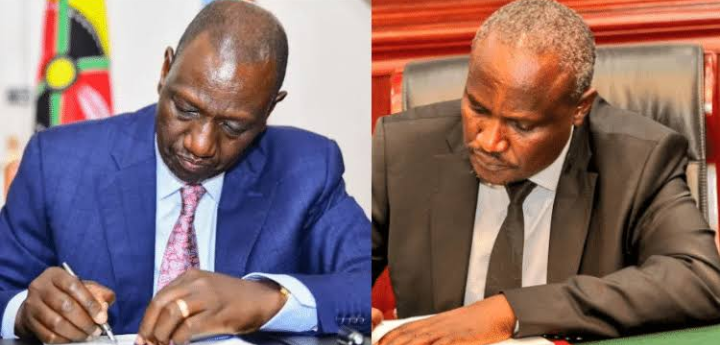Kenya’s public debt increased by KSh 229 billion in just three months, reaching a staggering KSh 10.8 trillion by September 2024.
This surge is largely attributed to missed tax collection targets and an over-reliance on domestic borrowing.
The Kenya Revenue Authority (KRA) struggled to meet its tax goals, falling short by KSh 72.5 billion during this period.
This shortfall is linked to delays in implementing revenue-boosting measures from the 2023 Finance Act.
Key tax streams, including income tax, VAT, and import duties, underperformed, resulting in slower revenue growth of 7.9% compared to an average of 13% in previous years.
To manage the fiscal gap caused by these deficits, the government has leaned heavily on domestic borrowing.
The Treasury had planned to raise KSh 377.7 billion locally to fund its KSh 3.6 trillion budget for the fiscal year.
However, this reliance on domestic credit has intensified the strain on public finances.
Debt servicing now consumes nearly 70% of government revenues, far exceeding the recommended cap of 30%, leaving little room for development and social spending.
This growing debt burden has heightened concerns about sustainability, with economists warning that Kenya is edging closer to a fiscal crisis.External factors have further complicated the debt situation.
A weakening Kenyan shilling against major currencies has raised the cost of servicing external debt, which accounts for more than half of the total debt stock.
From July to September 2024, the shilling depreciated significantly, increasing the burden of loans denominated in foreign currencies like the US dollar and euro.
While disbursements from multilateral lenders such as the IMF and World Bank provided some financial inflows, they also added to the country’s overall debt load.
The International Monetary Fund has flagged Kenya’s debt as being at high risk of distress, even though it remains classified as sustainable.
Without reforms in public finance management, the situation could worsen.
Key solutions include enhancing tax collection efficiency through digitalization, curbing unnecessary government expenditures, and renegotiating debt terms with creditors to reduce repayment pressures.
The government needs to explore alternative financing options, such as public-private partnerships, to fund development projects without adding to the debt burden.
The rapid accumulation of debt has placed Kenya in a precarious position, with its fiscal stability increasingly dependent on external factors and short-term borrowing strategies.
If immediate and effective policy measures are not taken, the growing debt could undermine economic growth and exacerbate challenges for the country’s citizens.





















Add Comment